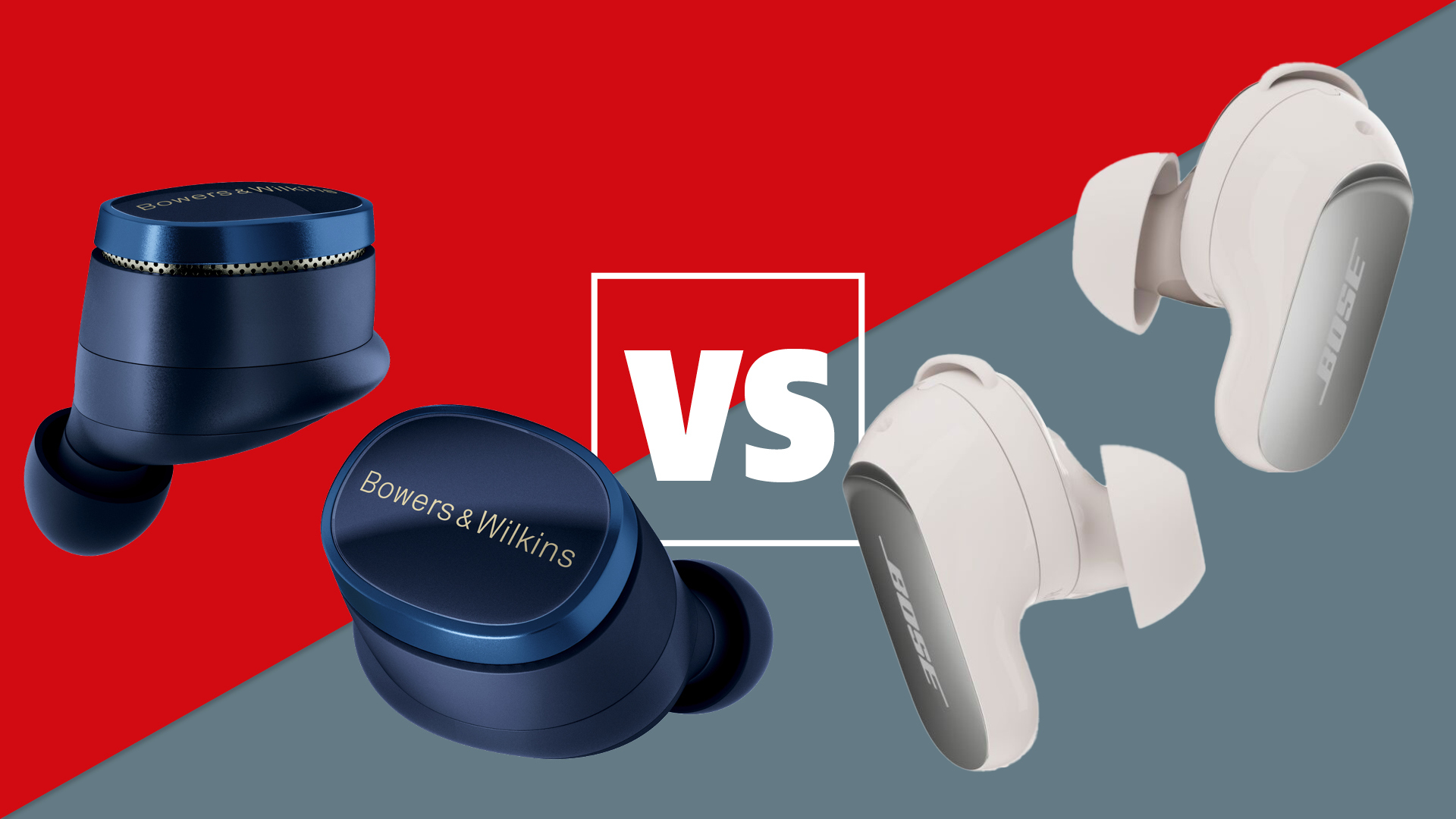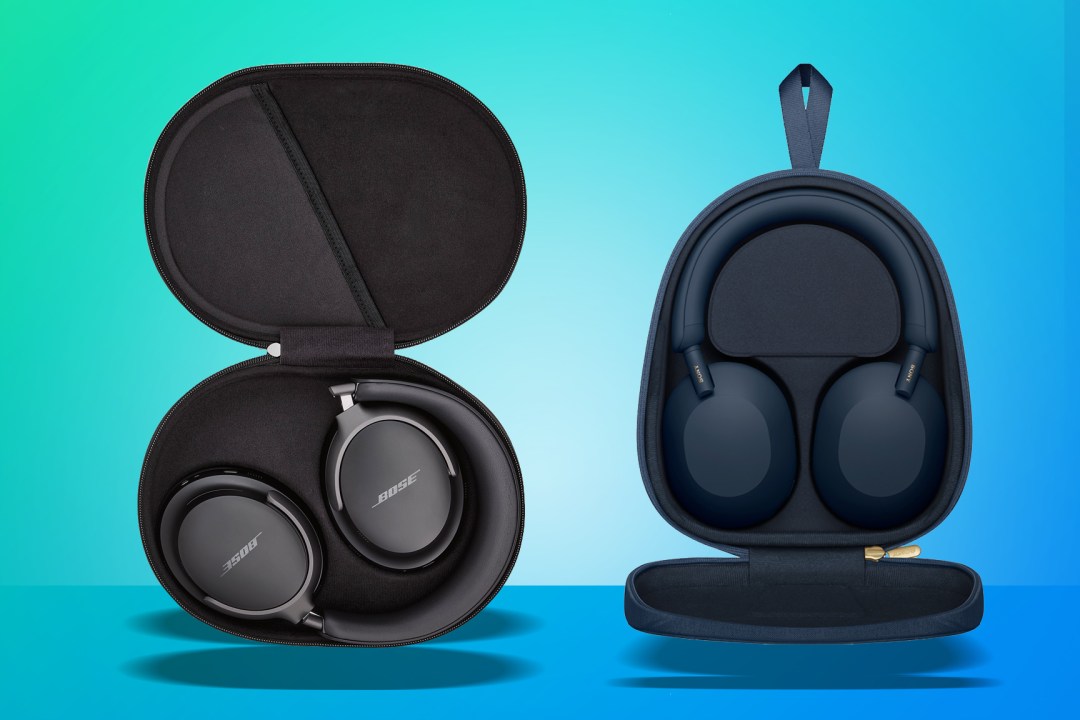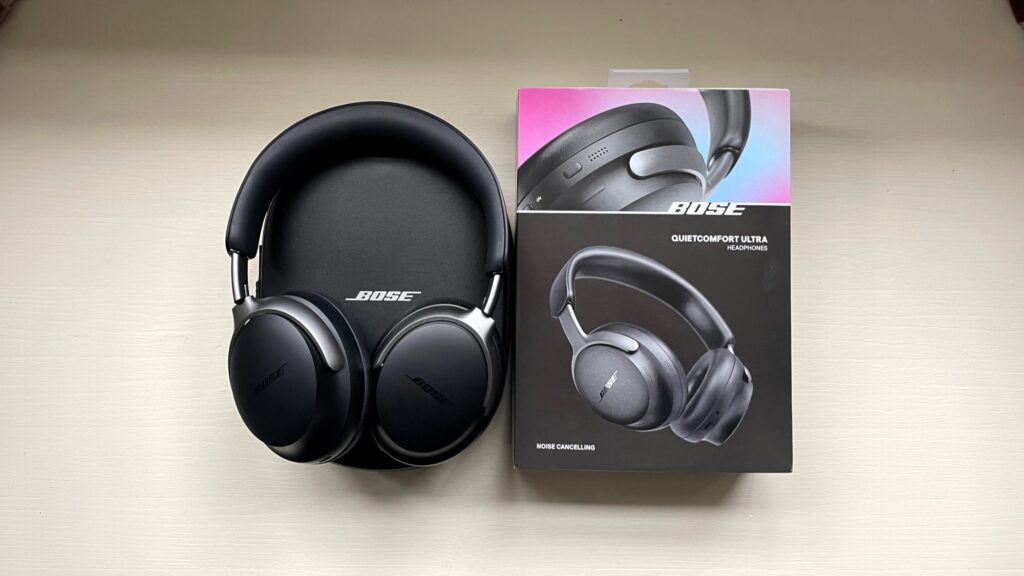The premium noise-canceling headphone market has long been dominated by two titans: Sony and Bose. Their latest flagship offerings—the Sony WH-1000XM5 and Bose QuietComfort Ultra—represent the pinnacle of wireless audio technology, each bringing distinct strengths to the table. For audiophiles and casual listeners alike, choosing between these two exceptional headphones can feel like an impossible task.
Design and Comfort: Two Philosophies

The Sony WH-1000XM5 marks a significant departure from its predecessor’s design language. Sony has embraced a sleeker, more modern aesthetic with a streamlined headband that eliminates the folding mechanism found in earlier models. The result is a pair of headphones that feels more refined and contemporary, though this comes at the cost of portability—they no longer fold for compact storage.
Bose, meanwhile, has refined its classic design philosophy with the QuietComfort Ultra. The familiar comfort-first approach remains intact, featuring plush ear cushions and a well-balanced weight distribution that makes extended listening sessions effortless. The build quality feels robust, and the folding mechanism ensures they remain travel-friendly.
Both headphones excel in comfort, but they achieve it differently. Sony’s approach prioritizes a premium feel and modern aesthetics, while Bose focuses on tried-and-true ergonomics that have made their headphones legendary for all-day wear.
Audio Quality: The Heart of the Matter
When it comes to sound signature, these headphones cater to different preferences. The Sony WH-1000XM5 delivers a more analytical and detailed sound profile. The highs are crisp and well-extended, mids are clear and present, and the bass response is tight and controlled. Sony’s DSEE Extreme upscaling technology works admirably to enhance compressed audio files, making even lower-quality sources sound more refined.
The Bose QuietComfort Ultra takes a warmer, more consumer-friendly approach. The sound signature is slightly more bass-forward, with a smooth midrange that makes vocals particularly engaging. While purists might prefer Sony’s more neutral approach, Bose’s tuning tends to be more forgiving across a wide range of music genres and listening preferences.
Both headphones support high-quality codecs—Sony with LDAC for Android users and Bose with aptX Adaptive—ensuring the best possible wireless audio transmission quality.
Noise Cancellation: The Silent War

This is where the battle becomes truly fierce. Sony’s noise cancellation technology has evolved significantly with the WH-1000XM5, featuring two processors working in tandem with eight microphones to create an impressively quiet listening environment. The adaptive noise canceling automatically adjusts to your surroundings, and the results are remarkable across various environments, from busy city streets to airplane cabins.
Bose, however, hasn’t earned its reputation for industry-leading noise cancellation without reason. The QuietComfort Ultra continues this legacy with refinements that make the silence almost unsettling in its completeness. Bose’s approach to noise cancellation feels more natural and less processed, creating a cocoon of quiet that many users find preferable for long listening sessions.
The difference between them is marginal, but if forced to choose, Bose maintains a slight edge in pure noise cancellation effectiveness, while Sony offers more customization options through its app.
Features and Smart Capabilities
Sony pulls ahead in the features department with its comprehensive app ecosystem and smart capabilities. The WH-1000XM5 includes speak-to-chat functionality that automatically pauses music when you start talking, adaptive sound control that adjusts settings based on your activity, and multipoint Bluetooth connectivity that seamlessly switches between devices.
The QuietComfort Ultra keeps things simpler but includes Bose’s spatial audio technology, which creates an immersive, theater-like listening experience. While not as feature-rich as Sony’s offering, Bose focuses on perfecting core functionalities rather than adding numerous bells and whistles.
Battery Life and Practical Considerations
Both headphones deliver excellent battery life, with the Sony WH-1000XM5 offering up to 30 hours with noise cancellation enabled, while the Bose QuietComfort Ultra provides around 24 hours. Both support quick charging, giving you hours of playback with just a brief charging session.
The Sony’s inability to fold might be a dealbreaker for frequent travelers, while the Bose’s more traditional design remains practical for on-the-go use.
The Verdict: Choose Your Champion
Declaring an outright winner between these two exceptional headphones would be doing a disservice to their respective strengths. The choice ultimately comes down to your priorities and preferences.
Choose the Sony WH-1000XM5 if you prioritize detailed, analytical sound quality, extensive customization options, and cutting-edge smart features. These headphones are perfect for tech enthusiasts who want the latest innovations and don’t mind sacrificing some portability for premium design.
Choose the Bose QuietComfort Ultra if comfort is paramount, you prefer a warmer sound signature, and you want the most natural-feeling noise cancellation available. These are ideal for frequent travelers and those who value simplicity and reliability over feature abundance.
Both headphones represent the current pinnacle of consumer audio technology, and either choice will provide years of exceptional listening experiences. In this battle of giants, the real winner is anyone lucky enough to own either pair.



